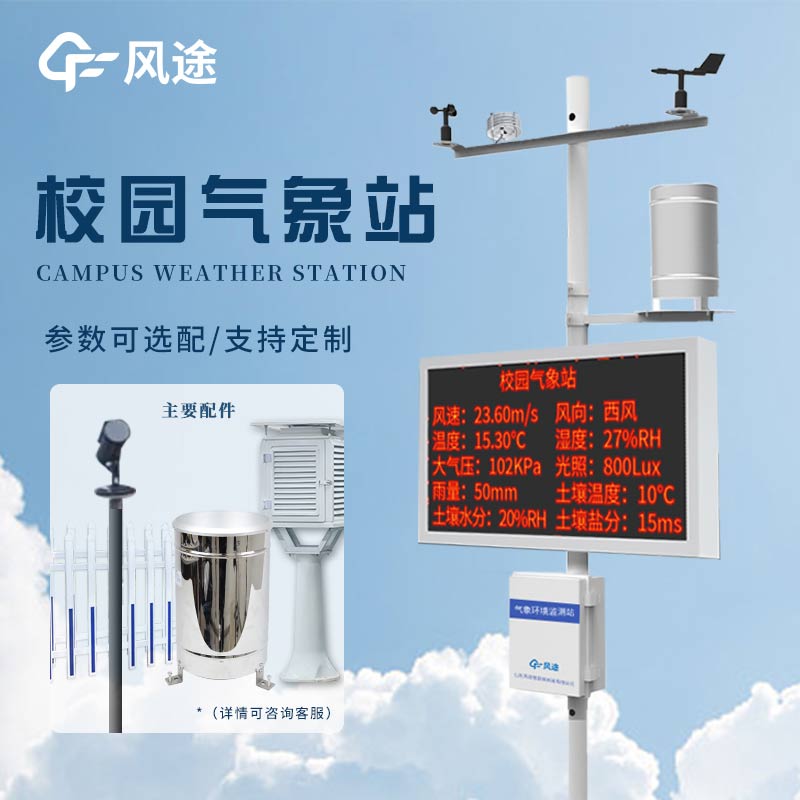Meteorological environment monitoring equipment supplier
Insist on doing high-precision customer favorite technology products
The frequent occurrence of extreme weather makes meteorological science education particularly important. It not only enhances students' interest in meteorology, but also gives them a deeper appreciation of the fascinating aspects of meteorological science. The meteorological monitoring station plays a dual role in this process: on the one hand, it serves as an educational tool to help students learn about meteorology in a fun way; on the other hand, it is an important monitoring tool that can track a wide range of meteorological parameters in real time, such as temperature, humidity, wind speed, wind direction, rainfall and noise.
These monitoring data not only provide students with visual materials for learning meteorology, but also are extremely important for meteorological research and weather forecasting. Through these real-time data, researchers can better understand weather patterns and predict weather changes, thus providing more accurate weather information to the society.
Campus weather monitoring equipment can monitor campus weather conditions in real time, record data accurately, and predict the weather to issue timely warnings. It is also a good tool for teaching and helps students learn meteorological knowledge intuitively.
The campus monitoring station consists of the following core components: solar power generation system to provide energy, wind speed and direction sensors to measure wind force and direction, multi-parameter louvre box weather sensors to monitor multiple weather elements, camera equipment for real-time monitoring, and power supply unit, optional LED display, waterproof chassis, and a solid stand.
The environmental monitoring cloud platform is equipped with data processing and storage functions. The system performs comprehensive analyses of collected weather information, enabling users to track and predict weather fluctuations more accurately.
Decision makers in the education sector can easily access instant weather data through the cloud platform. The integration of these data provides a practical basis for teaching and learning activities that can be used to conduct scientific investigations, establish safety plans and promote meteorological science, thereby fostering interest in meteorology among students and enhancing their understanding of environmental phenomena.
